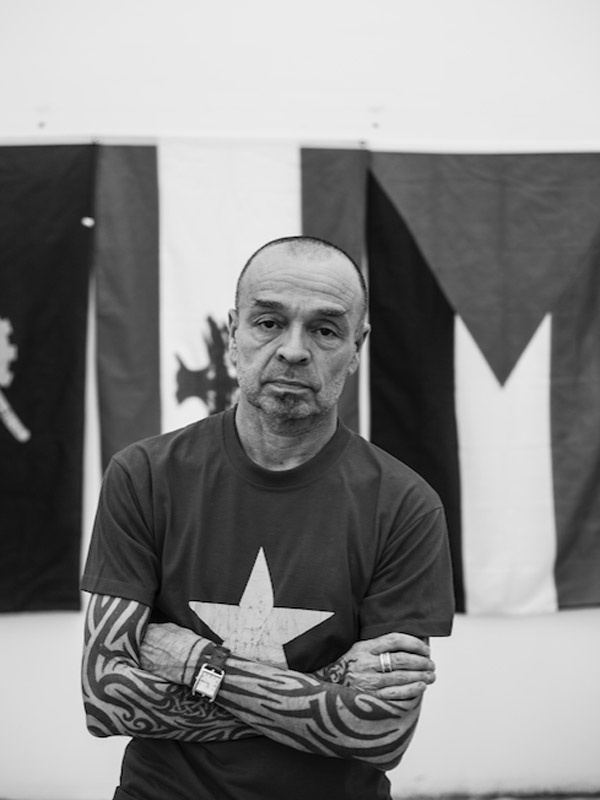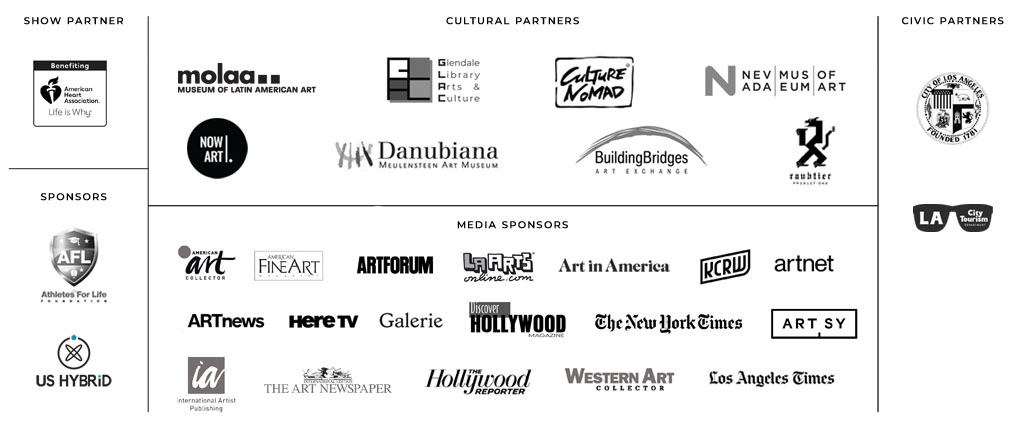IF YOU DRINK HEMLOCK, I SHALL DRINK IT WITH YOU or A BEAUTIFUL DEATH; player to player, pimp to pimp.
(As performed by the inmates of the Asylum of Charenton under the direction of the Marquis de Sade): Daniel Joseph Martinez
Curated by Chon Noriega
Presented by LACMA and the UCLA Chicano Studies Research Center
(As performed by the inmates of the Asylum of Charenton under the direction of the Marquis de Sade): Daniel Joseph Martinez
Curated by Chon Noriega
Presented by LACMA and the UCLA Chicano Studies Research Center
Daniel Joseph Martinez’s immersive environment references Jacques-Louis David’s seminal portrait The Death of Marat (1793), painted and also reproduced shortly after Marat’s assassination during the French Revolution. Whereas David’s painting represents a single moment, both sanitized and accurate in its details, Martinez creates a mise en scène using three life-like sculptures modeled after the artist’s own body. These depict Marat in his bath as well as assassin Charlotte Corday and Martinez himself both standing behind Marat (each with a bloodied dagger in hand).
Martinez stages Marat’s assassination as a public spectacle surrounded by bleachers, although viewers can also immerse themselves within the scene, no doubt taking selfies. In this way, Martinez connects David’s painting with our present moment, giving a historical dimension for modern politics as a form of theater, sport, and business. But Martinez pushes even further. The Death of Marat quickly became iconic of the French Revolution, not because it depicted a public spectacle, but rather because it circulated a political image that focused attention on the personal and private. Once that happened, politics-as-spectacle was no longer dependent on public space – it was in our minds.
About the artist:
For more than 30 years, Los Angeles-born artist Daniel Joseph Martinez (b. 1957) has been honing his politically-inflected practice, which critic Jeffrey Kastner has characterized as “unapologetically prob[ing] uncomfortable issues of personal and collective identity, seeking out threadbare spots in the fabric of conventional wisdom.” Martinez’s practice takes the form of photography, painting, site-specific installation, printed works, performance and public interventions to question issues of personal and collective identity, vision and visuality, and the fissures formed between the appearance and the perception of difference.
Martinez stages Marat’s assassination as a public spectacle surrounded by bleachers, although viewers can also immerse themselves within the scene, no doubt taking selfies. In this way, Martinez connects David’s painting with our present moment, giving a historical dimension for modern politics as a form of theater, sport, and business. But Martinez pushes even further. The Death of Marat quickly became iconic of the French Revolution, not because it depicted a public spectacle, but rather because it circulated a political image that focused attention on the personal and private. Once that happened, politics-as-spectacle was no longer dependent on public space – it was in our minds.
About the artist:
For more than 30 years, Los Angeles-born artist Daniel Joseph Martinez (b. 1957) has been honing his politically-inflected practice, which critic Jeffrey Kastner has characterized as “unapologetically prob[ing] uncomfortable issues of personal and collective identity, seeking out threadbare spots in the fabric of conventional wisdom.” Martinez’s practice takes the form of photography, painting, site-specific installation, printed works, performance and public interventions to question issues of personal and collective identity, vision and visuality, and the fissures formed between the appearance and the perception of difference.
Back


